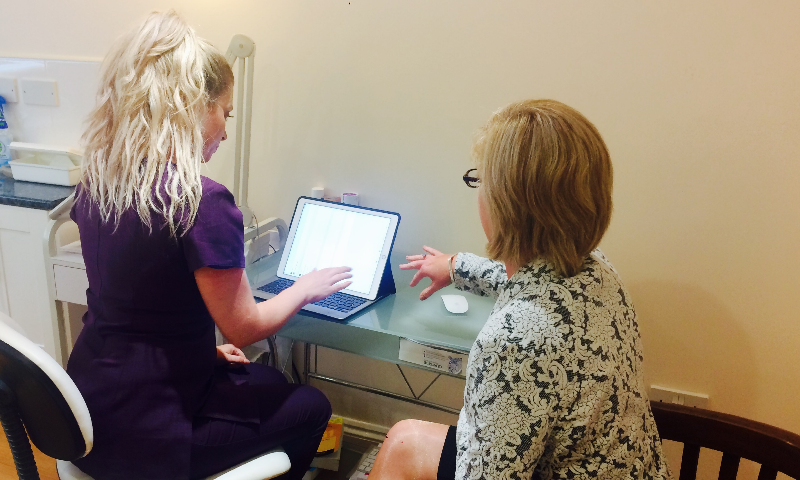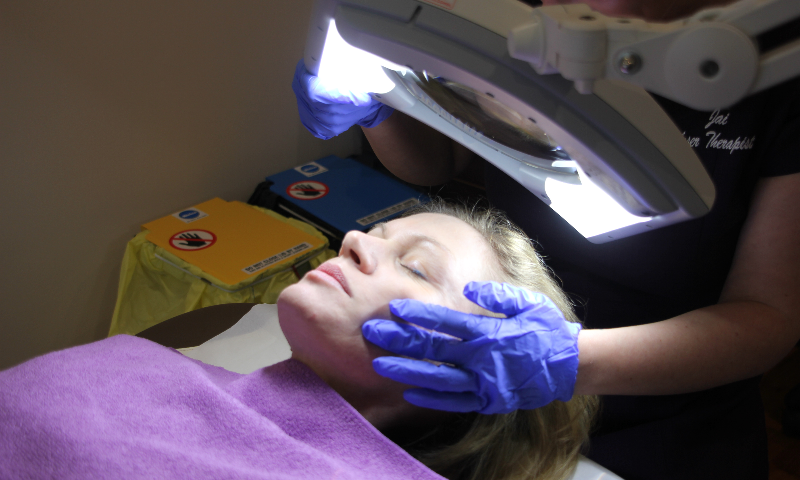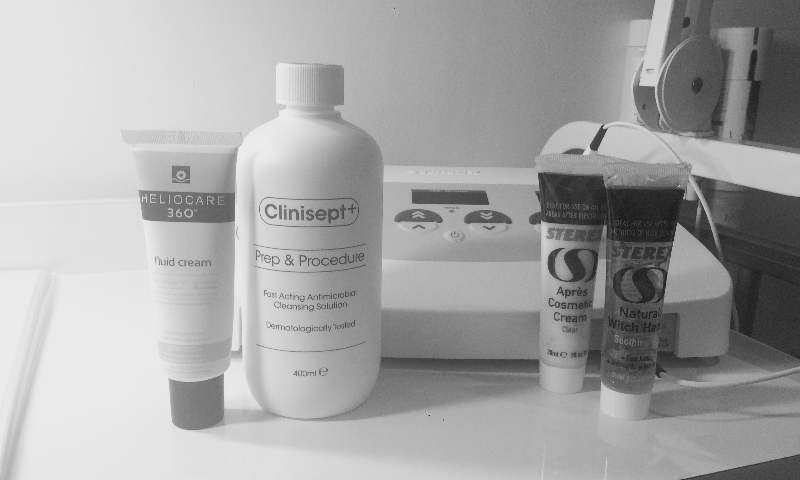30 minutes
Contact Us Now
At Aesthetic Solutions we offer electrolysis treatment. This is a safe and effective treatment that we use for various treatments. Traditionally it is used for the removal of unwanted hair, but we also use it for a treatment known as Advanced Cosmetic Procedures (ACP) with electrolysis. Electrolysis ACP can be used to treat and remove a variety of bothersome lumps and bumps on the skin including moles, sebaceous cysts, milia, skin tags, warts and blood spots.
Electrolysis is not a new technology and has been used for the best part of a century to remove thread veins, warts and many other blemishes. What is new is that the technology has advanced and progressed significantly in recent years to give us the type of devices we use today. This means that electrolysis treatment is comfortable, as well as safe and effective. Despite being around for a long time, electrolysis is still very much in demand and we recommend it to many of our patients. The use of Advanced Electrolysis or Advanced Cosmetic Procedures (ACP), means that we can remove blemishes which are cosmetically unsightly or bothersome.
We can treat a wide range of skin blemishes with ACP with minimal skin reaction or post-treatment care required as treatment is minimally invasive. This offers you a safe and proven route to improved skin and confidence that blemishes have been removed. Results are often instantaneous and life enhancing, so don’t let skin blemishes control your life.
Contact Us Now

During your initial consultation for electrolysis treatment, a full medical history will be taken to make sure you are suitable for treatment. We will also take photographs for your patient record. Depending on the blemish or hair concern that is to be treated, we will perform a patch test.

You will return to us for a treatment appointment. This is often quite quick, depending on the size and number of blemishes or hairs that are being treated. Following the electrolysis, aftercare products will be applied to the skin.

We will ask you to return for an appointment to review your before and after photographs and assess if a touch-up treatment is required.
To start your Electrolysis journey call us now on 01872 272520
Electrolysis is a treatment used to destroy hair roots and follicles, or small skin blemishes, through the application of heat produced by a tiny electrical current that is passed through a needle.
A very fine, disposable, sterile needle or probe, about the size of a small eyelash, is introduced into the individual hair follicle to the correct depth and a small amount of electrical current is released. This causes heat and eventually destroys the root of the hair by cutting off the blood supply which feeds the hair starving it of nourishment and nutrients. As a result, the hair becomes finer with often lighter hair growth and eventual demise of the hair. The ability of the hair follicle to produce a hair is destroyed rather than the hair itself.
Each hair requires more than one treatment because each individual hair has its own growing cycle and blood supply. Electrolysis works by weakening the hair over time and eventually destroying it. Courses of treatment are therefore imperative to consider the 6-week growth cycle of the average hair so that it can be targeted at the optimal time; therefore, permanent results take a little time to achieve.
This is dependent on the individual, some people find electrolysis little uncomfortable, but others can fall asleep during treatment. During an electrolysis treatment a tiny sterile probe is introduced into the opening of the hair follicle. A small burst of electrical energy is released at the base of the follicle and a sensation will be experienced like heat, a tingle or a minor sting. Everyone has their own tolerance to pain and treatment discomfort can be affected by many factors:
1) Individual pain thresholds - this can be affected by health, stress, time of menstruation etc.
2) Area to be treated
3) Strength and size of hair
4) Skin sensitivity
5) Type of current used – direct or alternative current - this includes devices with galvanic (direct current) and diathermy or short wave (alternative current), or a blend of the two.
One thing that you can depend on is that electrolysis works, so any minor discomfort is well worth the results.
Advanced Cosmetic Procedure (ACP) treatments using electrolysis are becoming increasingly popular. A wide diversity of skin blemishes can be quickly and easily treated with immediate and effective results offering an eventual blemish free skin.
A wide diversity of skin blemishes can be treated:
• Facial Thread Veins - commonly found around the nose and on the cheeks
• Blood Spots – bright red vascular blemishes frequently found on the midriff, back or front
• Spider Naevus – a central dilated capillary with smaller capillaries like the legs of a spider
• Skin Tags – commonly found on the neck, underarm and other areas of friction
• Milia – tiny, white, hard lumps containing keratin
• Warts – various types such as, common, seborrhoeic and verrucas
• Dermatosis Papulosa Nigra – common disorder found on black skins
• Moles – with GP consent the mole can be visibly reduced.
Some blemishes may require a GP’s written consent prior to treatment.
A treatment is usually 30 minutes, but can take up to one hour, depending on the size of the area being treated. You may need more than one treatment, depending on the extent of the skin blemish and how well it resolves after one treatment session.
Expect your skin to look a little ‘pink’ and rosey immediately after an electrolysis treatment. This is normal redness caused by treatment, which will resolve very quickly as the sensitivity subsides, and should return to normal within 24 hours.
Scabbing can occur after some ACP procedures, depending on the size of the blemish treated. Following the electrolysis treatment an aftercare product will be applied to calm and soothe the area, protecting it from an unwanted reaction. We will recommend aftercare products and skincare instructions for you to carry out at home, to help you achieve the best healing and results you’re your treatment.
Due to the use of an electrical current you will be unsuitable for electrolysis treatment if you have a pace maker, certain metal implants or pins, internal auditory device (hearing aid) or have haemophilia.
A full medical history will be taken prior to treatment. Those with the following conditions may or may not be suitable for electrolysis treatment, which can be assessed at your consultation – those with cancer, diabetes, epilepsy, AIDS/HIV, heart/circulatory diseases, hepatitis, keloid scarring, certain metal implants, pregnancy, skin diseases and disorders.
Redness, stinging, scabbing, bruising, mild swelling of the areas being treated. In rare cases scarring or pigmentation could occur.
Aftercare will depend on the area and type of electrolysis treatment performed, but in most cases, you must not touch the treated area or remove any scab that may appear. Touching and picking the area could introduce infection, inhibit healing and result in scarring.
You should apply any recommended aftercare products regularly, with clean fresh cotton wool, until the area has completely healed. Wash or cleanse the area using a gentle soap or perfume-free cleanser and gently pat it dry, using disposable towels or tissues. Avoid UV light, such as sunbeds, and excessive exposure to the sun.
You will also need to avoid swimming, using perfumes, fake tan products or perfumed body lotions, saunas, steam rooms, facial steaming, facial scrubs, waxing and other beauty treatments in the area until it is completed healed.
Electrolysis can permanently remove hairs and skin blemishes, although several treatment sessions may be required to achieve the final removal.
Prices for the treatment will be from £50, depending on the area and type of electrolysis treatment needed and our electrolysis specialist will discuss this with you at your initial consultation. Mole revision costs £250.